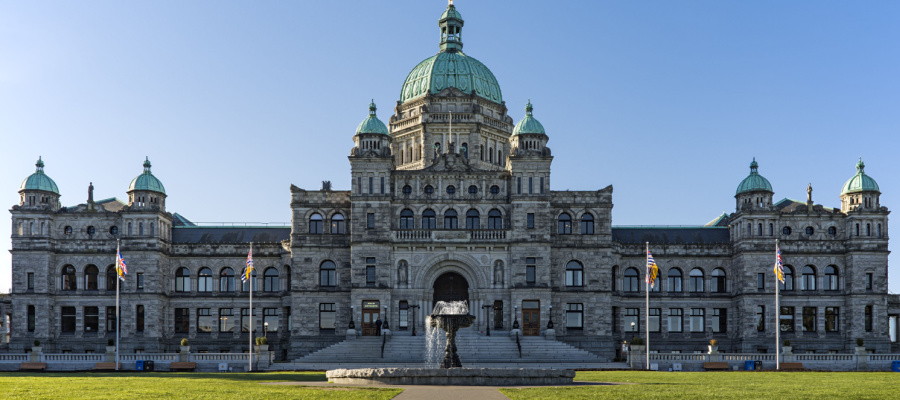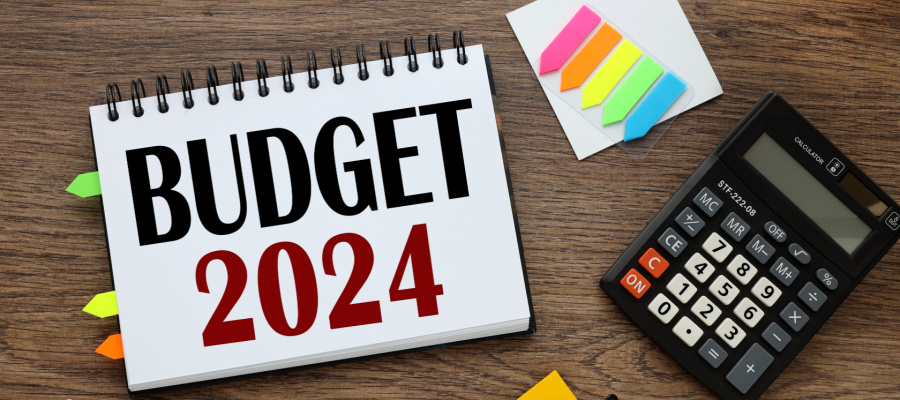BC Budget 2009: Vanilla, No Sprinkles (revised)
Faced with a nasty recession at its doorstep, the BC budget is uninspiring and underwhelming in its ambition. Overall there is little that actively plans for a recession, preferring instead a steady-as-she-goes budget, perhaps aimed at cultivating the image of responsible economic managers in a time of crisis. There are no tax cuts or drastic spending cuts, thankfully, but nor is there any short-term assistance to the most vulnerable, nor any meaningful investments towards a long-term strategic vision. This makes for an interesting counterpoint to the federal budget, which did actually have lots of tax and spending measures to show a concerned public.
Economic and Fiscal Outlook
My own view is that the economic picture in BC is worse than what is in the budget. While premised on a 0.9% drop in real GDP in 2009, the budget assumes a rebound arriving in 2010. Given the state of housing starts, commodity prices and the state of export markets, I am more pessimistic and as a result it seems to me that the budget does not do enough.
The budget’s optimism is reflected in the projections for unemployment, which is assumed to average 6.2% for 2009. But unemployment recently surged by almost one full percentage point in January 2009, to 6.1%, and is two full percentage points higher than a year ago. The budget’s estimate of 11,000 job losses for 2009 is one-third as much as we lost in January alone. My best guess is that unemployment will close to year in the 8-9% range, as the job losses pile up.
The government’s economic forecasts translate into a $495 million deficit in 2009/10 and $245 million in 2010/11, before rebalancing in 2011/12. These deficits are relatively small compared to the total budget: the 2009/10 deficit amounts to only 1.3% of total revenues. For a government so committed to fiscal conservatism, this is a small bridge to cross, so you wonder why they bothered convening the legislature early to amend in embarrassing fashion their own balanced budget legislation.
Perhaps because those deficits may be much larger before this is all over. Spending pressures for social assistance could rise much more than currently forecast (see below). A challenge is in interpreting the government’s revenue forecasts. In years past, tax revenues have been grossly understated leading to large “surprise” surpluses at the end of the fiscal year compared to budget time. This year those revenue projections look to be more reasonable, although it will be interesting to see what the final tallies for 2008/09 will be to get a more accurate baseline (we will not know until summer). That said, given the recession, the budget projects an increase in some tax revenues predicated on growing personal income of 1.7% and growing consumer expenditures of 1.9% in 2009. This seems unlikely, and so we could easily see bigger deficits before this is all over. Added to this is the fact that there are no forecast allowances in this year’s budget, because that would make the deficits look larger (it was only OK to make surpluses look smaller).
In terms of stimulus, there is almost none in this budget. BC’s GDP is just under $200 billion. A deficit of $495 million is a mere quarter of one percent of provincial GDP. Because the deficits is due to falling revenues arising from the recession, it is not really a stimulus. Instead, and as anticipated, any stimulus is in the capital budget, up $1 billion in 2009/10 from 2008/09 – or half of one percent in new stimulus. The “new money” in 2009/10 compared to the previous baseline is slightly larger, an increase of $1.4 billion. Total new money for capital spending over the entire 2008/09 to 2010/11 period amounts to an increase of $2.6 billion over previously announced figures.
Capital expenditures get amortized in the operating budget over several decades (the lifetime of the asset in question), an accounting convention that creates an incentive to “hide” spending measures outside the operating budget. The consequence is that we are biased towards bricks and mortar at the expense of funds to provide the services therein.
Getting details on all of this new capital spending is more difficult as there is no list of projects, and much of the detail in the budget lumps old money in with new, and is allocated over multiple years. The province will match the anticipated federal contribution to infrastructure of $1 billion from last month’s federal budget for a total of $2 billion in infrastructure, over three years (technically the federal money is supposed to spent within two years, so it is not clear why this is allocated over three).
These numbers are much lower than the $14 billion touted by the government, as most of the budget is re-announcing old money, not new money. Also in the budget is the new roof for BC Place, at a cost of $365 million (during the Q&A, Hansen argued that future real estate sales will pay this money back). And that entire budget has extremely little in support of public transit, social housing, residential care, areas that are in desperate need of a public boost.
On the other hand, it deserves mention that the new Port Mann Super-Bridge is not accounted for in this budget. This is a $3-5 billion project that will be financed by tolls. Even though the government is putting up one-third of the financing to the private bridge developer (yes, it is that stupid), there is nothing on the books about it. The new PM will create jobs and is an additional aspect of stimulus. But ultimately a dumb one that undermines any lofty climate change objectives the government might still have.
Bottom line: Total taxpayer-supported (excluding self-supporting Crowns) debt-to-GDP rises from 13.8% to 15.2%, and on a total provincial debt basis rises from 18.7% to 20.4%. These levels of debt are very low compared to other provinces and to BC’s own history, so there is not much to be concerned about in terms of higher debt. Indeed, there is much more capacity to make strategic investments than is being let on.
Expenditures
In terms of program expenditures, current year (2008/09) expenditures are up almost half a billion dollars. Our last glimpse of projected expenditures (from the first quarter update last September) put them at $39 billion in 2009/10 and $40.6 billion in 2010/11. The new numbers are $39.3 billion in 2009/10, an increase of $280 million, and $40 billion in 2010/11, a CUT of more than half a billion.
A big story in the budget is $1.9 billion of “administrative and other cost savings” over three years that reallocated to other priorities. This is the “belt-tightening” part of the budget, and it is poorly explained. For example, $589 million in savings are identified in 2009/10, but information is only provided that accounts for $297 million, leaving the remaining $292 million unaccounted for, as well as any information about savings in future years. On top of that there are extra “efficiencies” that need to be found of $125 million in 2010/11 and $250 million in 2011/12.
Health care fares the best of any sector in the budget, with an increase of 5.7% in each of the next two years. Little of this is new money, however – only $25 million is added to the figure tabled in Budget 2008.
K-12 funding has been cut relative to the allocation from last year’s budget, a striking development given recent concerns about budget shortfalls for school districts. Overall, K-12 funding increased by 1.5% in 2009/10 and 0.7% in 2010/11, amounts that are not sufficient to keep up with cost pressures and will thus lead to further budget cuts down the road. The difference seems to have been handed over to the post-secondary sector.
The budget plans for a small increase in social services budget, including social assistance (a rise of $47 million in each of the next two years). Given the downturn and a 50% increase in unemployment over the past year, the budget projects only a small rise in temporary assistance caseload of 6%, and for the total caseload a projected increase of 4.6%. These numbers could easily swell due to the recession, leading to a higher deficit. But the budget increase is only due to the slightly higher caseload; there are no major changes to the welfare regime, nor any new actions to combat homelessness.
Yesterday’s Throne Speech made a big deal about aboriginal reconciliation but the budget shows that the Ministry of Aboriginal Relations and Reconcilation will get a budget cut of about $9 million, or 18% below last year.
The budget for Tourism, Culture and the Arts is cut from $349 million in 2008/09 to $55 million in 2009/10. Presumably much of this pre-Olympic work can be done through Vanoc, which is not covered by the operating budget.
The Ministry of the Environment also received a budget cut, even though it now has new responsibilities for the Climate Action Secretariat. If the government’s green agenda was sincere we should have seen an increase in the MOE budget, and this neglect makes me think that BC’s legislated GHG reduction targets are about as safe as the government’s balanced budget legislation.
Revenues
There are no new tax cuts in the budget, and the carbon tax will continue as previously planned. This will amount to another penny per litre at the pump come July. I was looking for a revamping of the low-income credit, scheduled to increase only by 5% in July 2009, compared to an increase in the carbon tax of 50%. The budget only commits to increase the credit by 10% as of July 2011. The sum total of these moves is that the carbon tax becomes regressive in 2009/10 and thereafter.
The budget also contains carbon tax rebates for local government, worth $15 million over four years.
As mentioned above, the tax revenue estimates seem much more realistic than in previous budgets, although perhaps too optimistic in some areas. Tax revenues rise and fall with the state of the economy, so much will depend on how the next couple of years goes.
The revenue side of the budget is also helped out by a bump of $400 million in 2009/10 in federal transfers compared to previously announced amounts, and almost $500 million in 2010/11.
Topics: Economy, Provincial budget & finance


